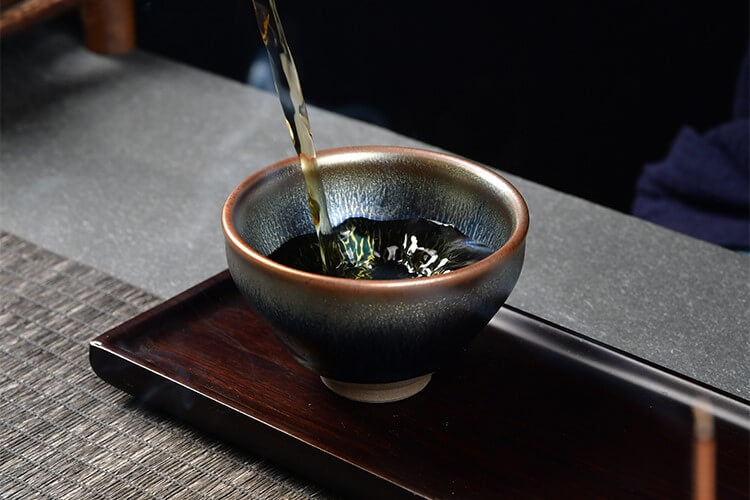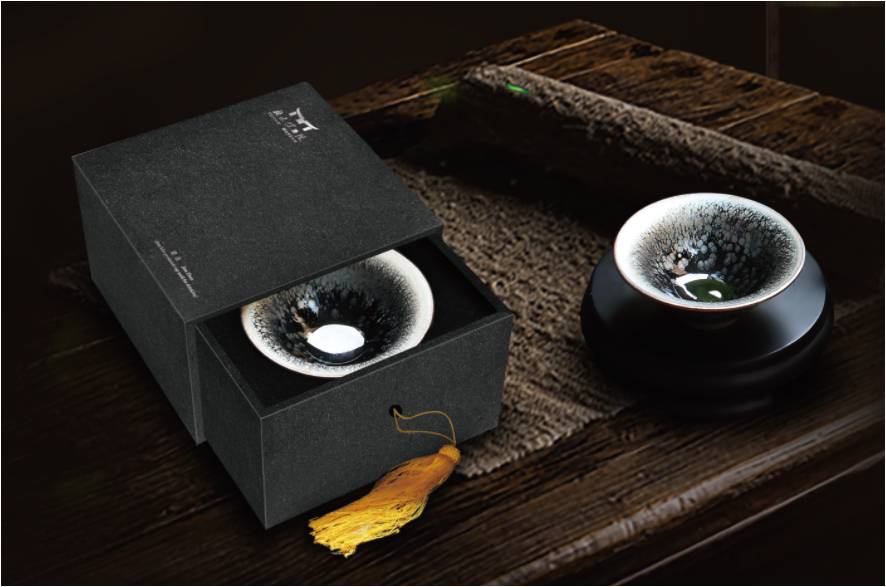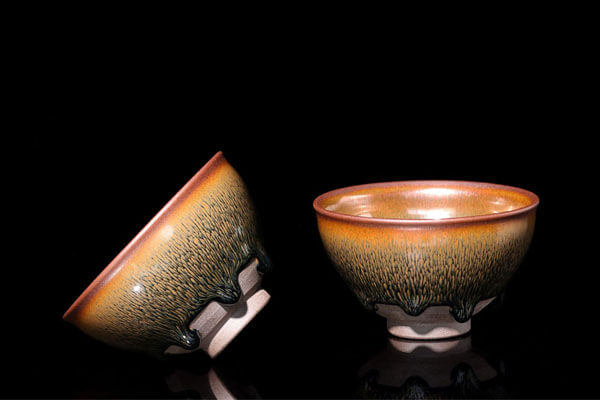The History of Tenmoku Jian Zhan: From Song Dynasty to Modern Tea Culture

The allure of Tenmoku Jian Zhan (天目建盏), the iconic black-glazed tea bowls from China, spans centuries. Revered for their mystical beauty and technical brilliance, these ceramics bridge ancient traditions and modern tea rituals. Let’s explore their journey from the kilns of the Song Dynasty to their revival in today’s global tea culture.
Origins in the Song Dynasty: Birth of Jian Zhan
During the Song Dynasty (960–1279 CE), China’s tea culture flourished, driven by the imperial court’s obsession with matcha-style powdered tea. This era birthed Jian Zhan tea bowls in Fujian’s Jianyang region, where local clay rich in iron and unique kiln conditions allowed artisans to create striking black-glazed ceramics.
The term Tenmoku (天目) originated from Japanese monks who studied at Tianmu Mountain temples in China. They brought Jian Zhan bowls back to Japan, where the name “Tenmoku” became synonymous with these prized vessels.
Key features of Song Dynasty Jian Zhan:
-
Iron-rich clay: Created a dense, heat-retentive “iron胎” (iron body).
-
Crystalline glazes: Firing techniques produced hypnotic patterns like hare’s fur (兔毫), oil spots (油滴), and rare iridescent “yaobian” glazes.
-
Functionality: Their thick walls retained heat, enhancing the frothy texture of whipped tea.
Emperor Huizong, a tea connoisseur, praised Jian Zhan in his Treatise on Tea, cementing their status as the pinnacle of Song Dynasty tea ware.
The Decline and Rediscovery of Jian Zhan
After the Song Dynasty, Jian Zhan tea bowls faded as tea trends shifted toward loose-leaf brewing. For centuries, their secrets were lost—until the 20th century, when archaeologists uncovered Jian kiln sites in Fujian. Modern craftsmen studied ancient shards and revived techniques like reduction firing, breathing new life into this ceramic art.
Jian Zhan in Modern Tea Culture

Today, Tenmoku Jian Zhan is celebrated globally, merging history with contemporary aesthetics. Here’s why they’re essential to modern tea culture:
-
Aesthetic Versatility: Their deep glazes complement diverse teas, from vibrant green matcha to aged pu-erh.
-
Scientific Appeal: The iron-rich clay softens tea tannins, enhancing flavor—a detail prized by tea connoisseurs.
-
Collector’s Passion: Rare oil-spot Jian Zhan or hare’s fur patterns command high prices at auctions, symbolizing both art and heritage.
-
Cultural Symbolism: Using a Jian Zhan connects drinkers to the meditative spirit of Song Dynasty tea rituals.
Artisans like Sun Jianxing, a Fujian master, preserve traditional methods while experimenting with new glaze effects, ensuring Jian Zhan remains relevant.
How to Integrate Jian Zhan into Your Tea Practice
-
Pairing: Use darker bowls for roasted oolongs or shou pu-erh; lighter glazes for delicate greens.
-
Care: Handwash gently to preserve the glaze. Over time, tea stains create a unique patina, known as “养盏” (nurturing the bowl).
-
Authenticity: Source from reputable Jianyang kilns or certified artisans to avoid mass-produced imitations.
Conclusion: Jian Zhan as a Timeless Legacy
From imperial courts to Instagram-worthy tea sessions, Tenmoku Jian Zhan embodies the harmony of art, science, and ritual. Whether you’re a tea enthusiast, collector, or history buff, owning a Jian Zhan is a tangible link to China’s cultural zenith—and a statement piece for modern ceramic art.
By embracing Jian Zhan, we honor a craft that has transcended dynasties, proving that true beauty is timeless.






